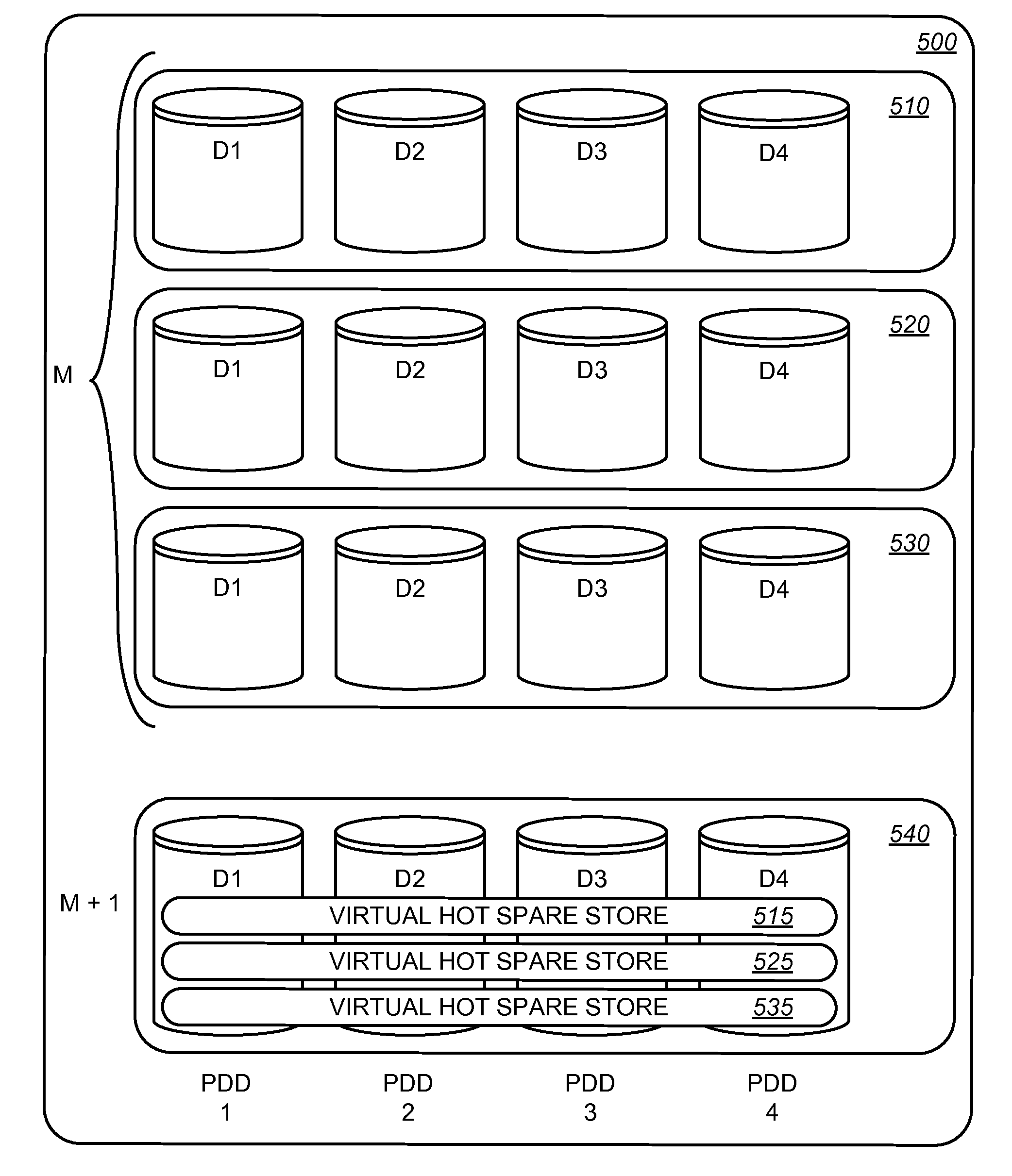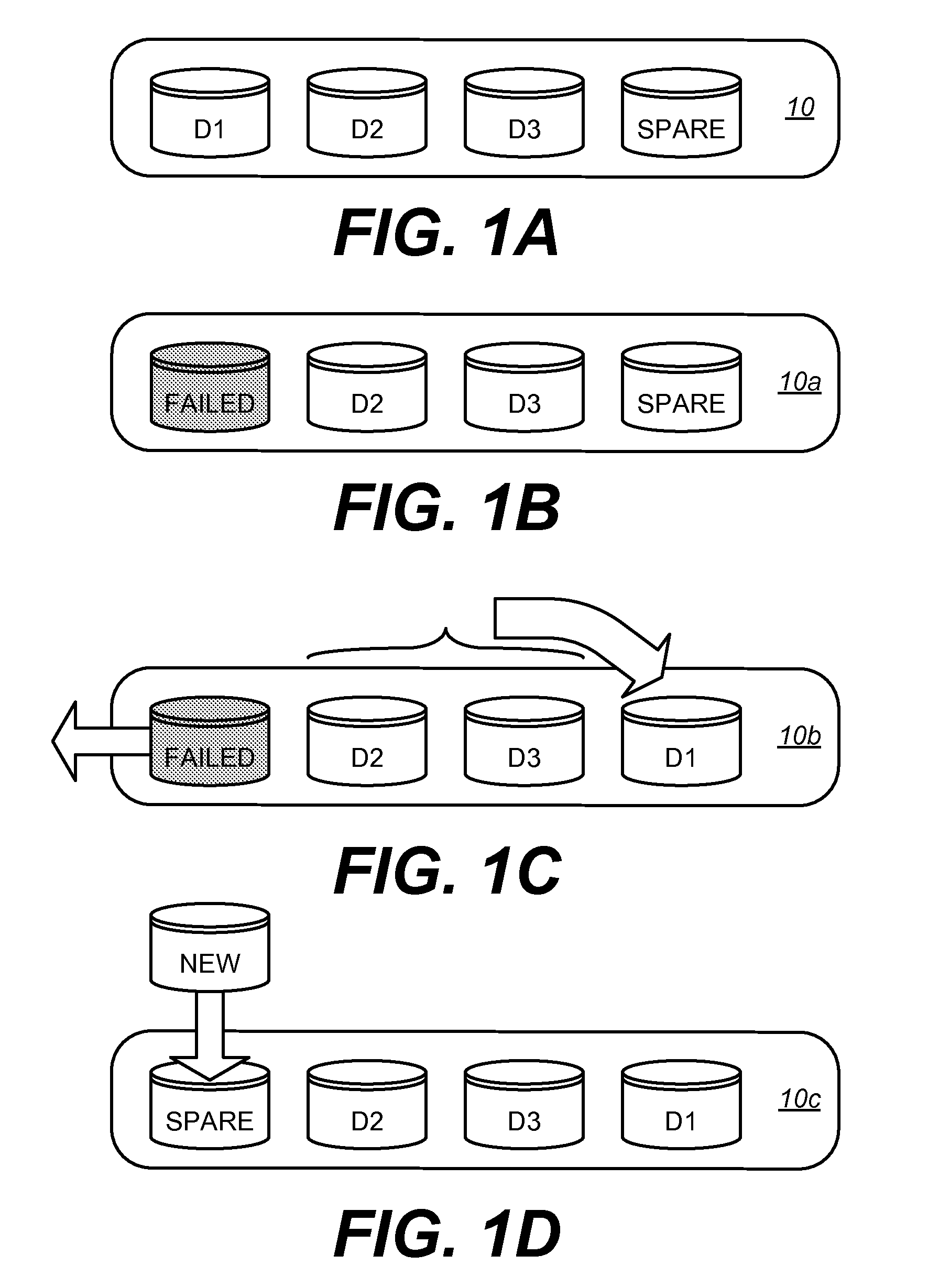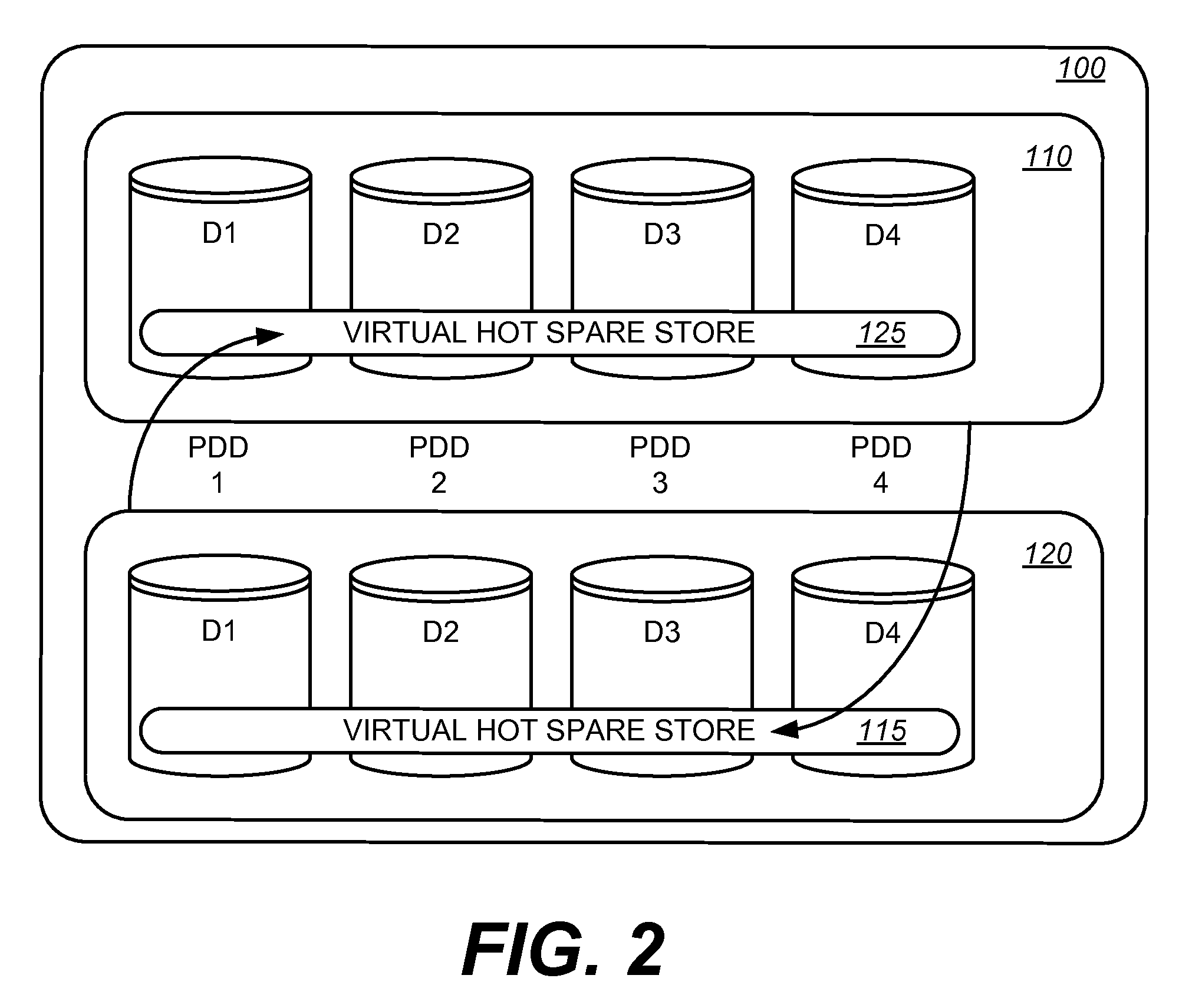Data volume rebuilder and methods for arranging data volumes for improved RAID reconstruction performance
a data volume and rebuilder technology, applied in the field of data storage systems, can solve the problems of high system bandwidth, increased data loss risk, and raid level 0 systems that are not fault-toleran
- Summary
- Abstract
- Description
- Claims
- Application Information
AI Technical Summary
Benefits of technology
Problems solved by technology
Method used
Image
Examples
Embodiment Construction
Hot spare disk drive rebuild reliability is addressed by using virtual hot spares in lieu of one or more physical disk drives. The virtual hot spares are data volumes supported in another RAID group. By using a virtual hot spare instead of a physical disk drive, the data write operations that need to be performed to rebuild the failed drive's data can be spread across multiple physical drive drives. This reduces the bottleneck of transferring data using a single hot spare disk's input / output interface and enables a faster rebuild of the RAID group.
In addition to decreasing the hot spare rebuild time, the use of virtual hot spares increases overall fault tolerance, increases data throughput to existing volume groups and enables the use of variably sized hot spares. When virtual hot spares are located in RAID groups, an extra layer of data protection is provided against multiple physical disk drive failures as the data in the virtual hot spare is shared across the physical disk drives...
PUM
 Login to View More
Login to View More Abstract
Description
Claims
Application Information
 Login to View More
Login to View More - R&D
- Intellectual Property
- Life Sciences
- Materials
- Tech Scout
- Unparalleled Data Quality
- Higher Quality Content
- 60% Fewer Hallucinations
Browse by: Latest US Patents, China's latest patents, Technical Efficacy Thesaurus, Application Domain, Technology Topic, Popular Technical Reports.
© 2025 PatSnap. All rights reserved.Legal|Privacy policy|Modern Slavery Act Transparency Statement|Sitemap|About US| Contact US: help@patsnap.com



